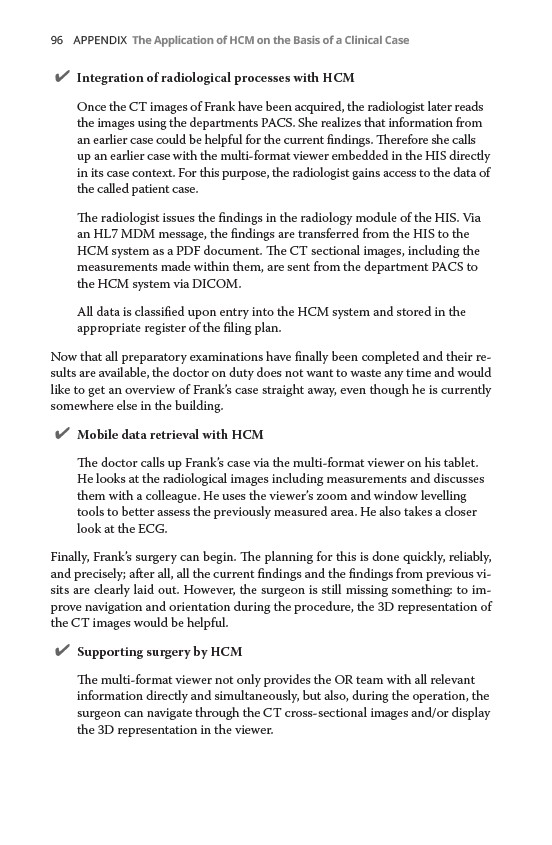
96 APPENDIX The Application of HCM on the Basis of a Clinical Case
✔✔ Integration of radiological processes with HCM
Once the CT images of Frank have been acquired, the radiologist later reads
the images using the departments PACS. She realizes that information from
an earlier case could be helpful for the current findings. Therefore she calls
up an earlier case with the multi-format viewer embedded in the HIS directly
in its case context. For this purpose, the radiologist gains access to the data of
the called patient case.
The radiologist issues the findings in the radiology module of the HIS. Via
an HL7 MDM message, the findings are transferred from the HIS to the
HCM system as a PDF document. The CT sectional images, including the
measurements made within them, are sent from the department PACS to
the HCM system via DICOM.
All data is classified upon entry into the HCM system and stored in the
appropriate register of the filing plan.
Now that all preparatory examinations have finally been completed and their results
are available, the doctor on duty does not want to waste any time and would
like to get an overview of Frank’s case straight away, even though he is currently
somewhere else in the building.
✔✔Mobile data retrieval with HCM
The doctor calls up Frank’s case via the multi-format viewer on his tablet.
He looks at the radiological images including measurements and discusses
them with a colleague. He uses the viewer’s zoom and window levelling
tools to better assess the previously measured area. He also takes a closer
look at the ECG.
Finally, Frank’s surgery can begin. The planning for this is done quickly, reliably,
and precisely; after all, all the current findings and the findings from previous visits
are clearly laid out. However, the surgeon is still missing something: to improve
navigation and orientation during the procedure, the 3D representation of
the CT images would be helpful.
✔✔Supporting surgery by HCM
The multi-format viewer not only provides the OR team with all relevant
information directly and simultaneously, but also, during the operation, the
surgeon can navigate through the CT cross-sectional images and/or display
the 3D representation in the viewer.